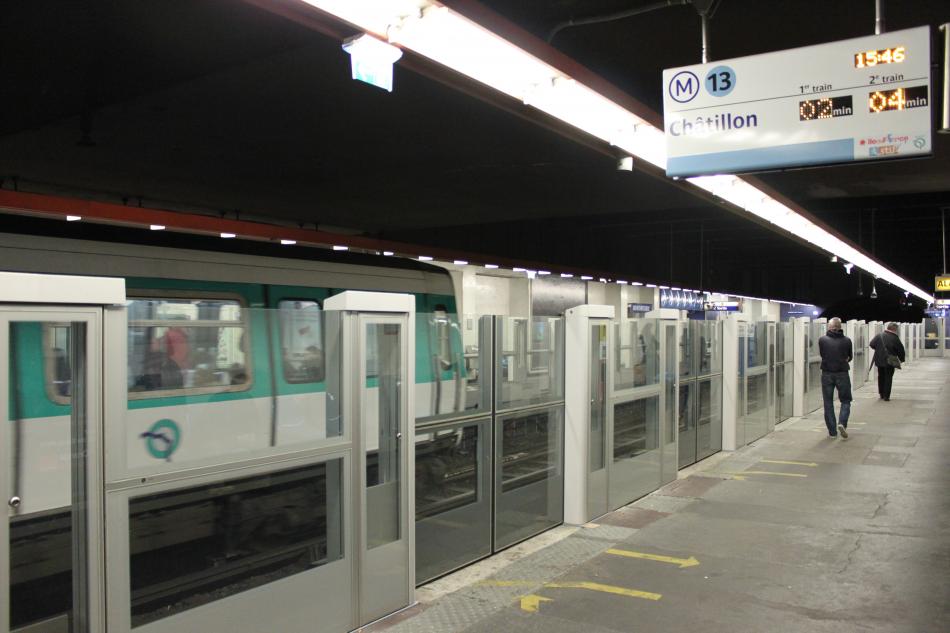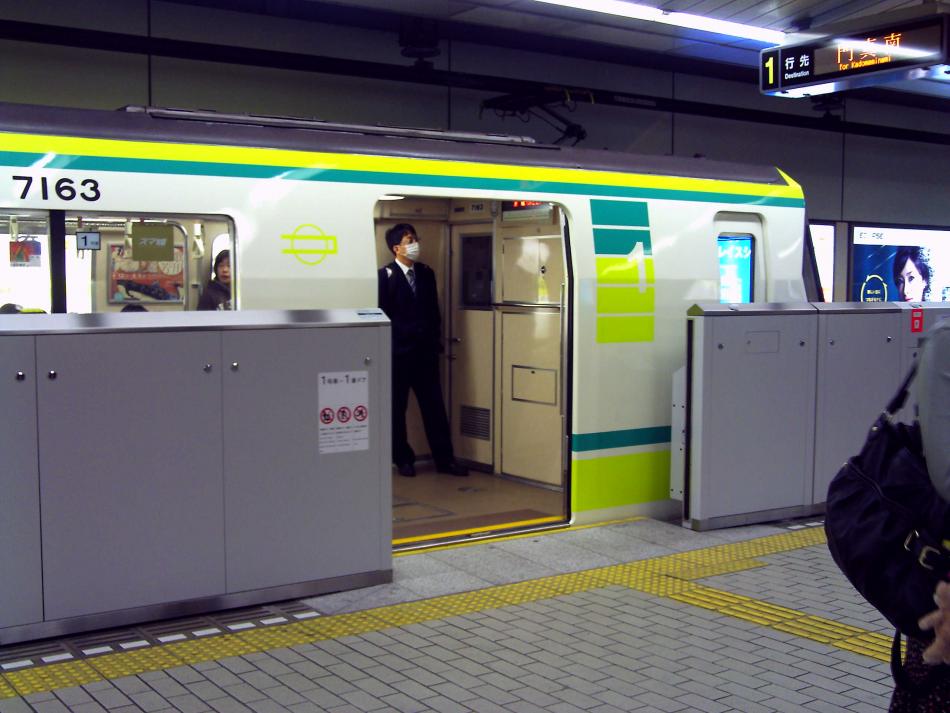This story was originally published on January 18 by THE CITY. Sign up here to get the latest stories from THE CITY delivered to you each morning.
The killing of a woman pushed into the path of a train at the city’s busiest subway station over the weekend has revived calls for the MTA to install protective shields and doors on platforms.
Former MTA executives and transit advocates told THE CITY that Michelle Go’s death should prompt the agency to revisit the issue — and follow the lead of transit systems around the world.
“It is high time that the MTA live up to the promise to install platform doors that can save lives,” said Charles Moerdler, who served on the MTA board from 2010 into 2019 and unsuccessfully sought to have platform screens tested in the subway.
“They said five, 10 years ago that they would test these doors out, and none of that has happened.”
Go, 40, was shoved by a man onto the tracks at the Times Square-42nd Street station, police said, before being fatally struck by an R train — a seemingly unprovoked death that platform screens could have prevented.
‘An Idea That Works in Many Places’
“China has them, Thailand has them, South Korea has them,” a former senior MTA official who did not want his name published told THE CITY. “Systems all over the world have made the decision to go in that direction, so now it’s just a matter of when are we going to wake up on this?”
The MTA has long argued that potential billion-dollar costs and engineering challenges make it infeasible to install platform gates across its 117-year-old subway system.
Janno Lieber, the agency’s acting chairperson and CEO, on Tuesday said platform doors are “an idea that works in many places.”
But he said the barriers are hindered by “special complexities in New York” that include the age of the system, how it ventilates and whether they would interfere with accessibility.
“All those things are real issues,” Lieber said. “That said, we’re always looking for ways that we can make the system safer.”
The transit agency four years ago scratched plans to test the technology at existing stations in Manhattan and The Bronx.
The system’s newest stations also didn’t get the safety measures built in: The No. 7 line’s 34th Street-Hudson Yards terminal opened in 2015 and the Q line’s new Second Avenue stations opened in 2017.
“In places that have their act together, it’s common for new stations to be built with platform doors,” said Ben Fried of TransitCenter, a research and advocacy organization.
The London Underground’s Jubilee Line extension in the late 1990s included platform shields and doors, as will its Elizabeth Line when it opens later this year.
Even sections of the Paris Metro and Hong Kong’s MTR network have added platform screens along some lines, despite the hurdles that come with major reconstruction in older systems.
“Retrofitting stations is a long-term task and it’s not simple,” Fried said.
Canceled Plans
In 2018, the MTA canceled plans to test the technology at the Third Avenue stop under 14th Street on the L line, instead steering funds for the project into installing elevators at the sprawling complex further down the tracks at Sixth Avenue and Seventh Avenue.
The doors on both platforms at the Third Avenue stop would have been tested during the planned 2019 L train shutdown, which was scrapped by then-Gov. Andrew Cuomo months before it was set to start.
“The case for doors was already made where the line characteristics would accommodate them — the only issue was funding,” Andy Byford, the president of New York City Transit at the time and now head of Transport for London, told THE CITY on Tuesday.
“As such, I didn’t see the point of a single-station installation when the benefits are already known from international experience and when the governor’s revised plan meant that we did not have the benefit of 24/7 access to the worksite.”
The MTA had also previously planned to test platform screens and automatic platform gates at the Pelham Parkway stop on the No. 5 line, according to a 2016 report.
Any retrofit of existing stations would be no easy lift, with challenges created by differing subway car models and the need for major station reconstruction — along with the MTA’s wide-ranging and pricey goals to maintain the system.
That’s before even getting to the challenges of intervening with people who are homeless, many living with mental illness, such as Simon Martial, 61, who police say confessed to shoving Go.
“On a larger level, the MTA has scarce resources and tremendous needs — to maintain a state of good repair, but also to fund needed resiliency improvements and upgrades and expansion projects,” said Lisa Daglian, executive director of the Permanent Citizens Advisory Committee to the MTA. “Platform doors won’t address the myriad social needs underground.”
‘Worth a Shot’
The renewed talk of protective barriers comes as the number of delays caused by people trespassing onto the subway tracks has climbed in recent months, with MTA officials acknowledging more people with mental health issues have gone onto the roadbed.
“People are getting on the tracks at rates that are really unacceptable. It’s dangerous,” Lieber said. “We have to figure out how to reduce that.”
A nascent Change.org petition also is calling for the MTA to install the doors, Crain’s first reported.
On the platform where Go was pushed to her death, riders said they would welcome an added layer of security.
“I think it’s worth a shot, even in just a few stations to see how it goes,” said Tiffany C., 23, of Brooklyn. “Look at all the space we have here on the platform, anybody can just push you onto the tracks.”
Vanessa Darling, 27, said she regularly stands toward the middle of the platform while waiting for the train.
“We would benefit from something like a door,” she said. “It could make you more comfortable.”
THE CITY is an independent, nonprofit news organization dedicated to hard-hitting reporting that serves the people of New York.








